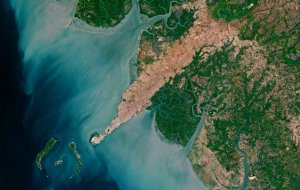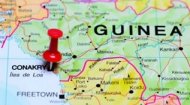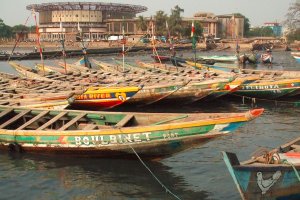|
Conakry Profile |
Conakry Profile |
Conakry Profile | Conakry Profile |
Explore all about the nation of Guinea in West Africa in a series of articles, pictures, videos and images.
More >
|
|

Conakry City ProfileConakry's unique blend of history, culture, and natural beauty make it an exciting destination for travelers and a fascinating place to explore with the city a melting pot of cultures, with a diverse population that includes indigenous Guineans, as well as people from neighboring West African countries, Europe, and Asia. This rich cultural heritage is reflected in the city's vibrant arts and music scene, as well as its traditional festivals and celebrations.
Also worth checking out are the the botanical garden at Camayenne, the 25,000 seater sports stadium (Stade du 28-Septembre, which gets its name from the date Guinea rejected a proposed new French constitution in a referendumin which ultimately led to the country's independence on 2nd October of that year), the monument to anticolonial martyrs, the Grand Mosque (below) which opened in 1982 built with funding from King Fahd of Saudi Arabia, and the Roman Catholic cathedral. Getting the ferry from Conakry to the Iles de Los (from "Islands of the Idols") which lie a short distance the town is also well worth a visit where tourists can enjoy the beaches and forested interiors. Conakry is home to several universities and higher education institutions, including the University of Conakry, which was established in 1962. The city's education system has seen significant improvements in recent years, with increased investment in schools, libraries, and other educational facilities.
Despite its rapid growth and development, Conakry still faces several challenges, including poverty, unemployment, and inadequate infrastructure. The city's rapid population growth has put a strain on its resources, and there is a need for continued investment in education, healthcare, and social services. However, the city's potential for growth and development remains strong, with a young and dynamic population, rich natural resources, and a strategic location on the Atlantic coast. As Guinea continues to develop and modernize, Conakry is poised to play an increasingly important role as a regional hub for business, culture, and innovation. The city's climate is tropical, with a wet season from May to November and a dry season from December to April. The average temperature in Conakry is around 27°C (80°F), with high humidity levels throughout the year. The video gives a good look and feel of Conakry. |
 The city's development accelerated particularly after independence, seeing significant investment in infrastructure, education, and healthcare, transforming Conakry into a modern, cosmopolitan city, although Conakry has faded from the days when it was known as the "Paris of Africa", although the city's infrastructure has seen significant improvements in recent years, with the construction of new roads, bridges, and public transportation systems. The modern international airport, Conakry International, serves as a gateway to the city, connecting it to major cities across the globe. Today Conakry is home to approximately 2.5 million people and serves as the country's economic, political, and cultural center.
The city's development accelerated particularly after independence, seeing significant investment in infrastructure, education, and healthcare, transforming Conakry into a modern, cosmopolitan city, although Conakry has faded from the days when it was known as the "Paris of Africa", although the city's infrastructure has seen significant improvements in recent years, with the construction of new roads, bridges, and public transportation systems. The modern international airport, Conakry International, serves as a gateway to the city, connecting it to major cities across the globe. Today Conakry is home to approximately 2.5 million people and serves as the country's economic, political, and cultural center.




 The city is home to several museums and cultural institutions, including the National Museum of Guinea, which showcases the country's rich history and cultural heritage. The Palais du Peuple, a large conference center, hosts numerous events and performances throughout the year, attracting both local and international audiences. Conakry's natural beauty is also a major attraction, with several parks and beaches offering opportunities for relaxation and recreation. The Îles de Los, a group of picturesque islands just off the coast, are a popular destination for day trips and excursions.
The city is home to several museums and cultural institutions, including the National Museum of Guinea, which showcases the country's rich history and cultural heritage. The Palais du Peuple, a large conference center, hosts numerous events and performances throughout the year, attracting both local and international audiences. Conakry's natural beauty is also a major attraction, with several parks and beaches offering opportunities for relaxation and recreation. The Îles de Los, a group of picturesque islands just off the coast, are a popular destination for day trips and excursions. Healthcare in Conakry is provided by a network of public and private hospitals, clinics, and medical centers. The city's healthcare infrastructure has also seen improvements, with the construction of new facilities and the introduction of modern medical equipment and technologies.
Healthcare in Conakry is provided by a network of public and private hospitals, clinics, and medical centers. The city's healthcare infrastructure has also seen improvements, with the construction of new facilities and the introduction of modern medical equipment and technologies.


